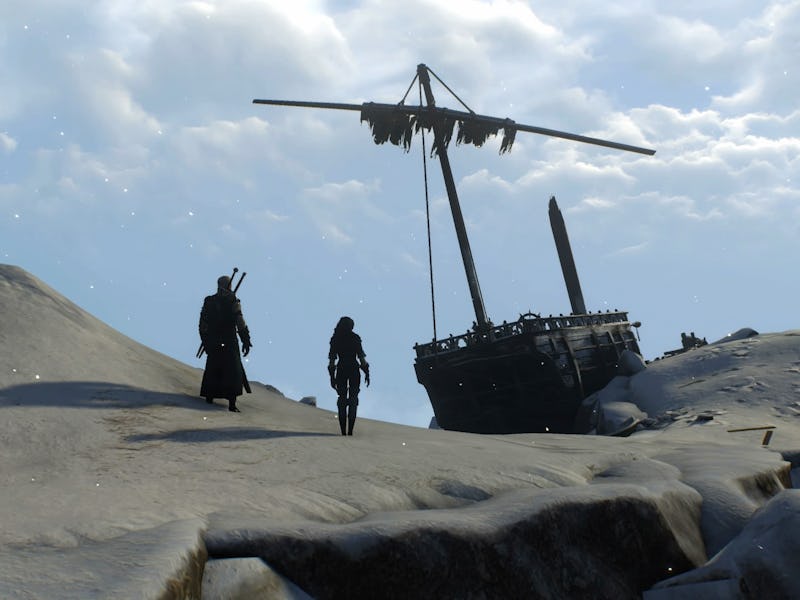What to Expect from 'The Witcher 3: Blood and Wine'
A quick guide to help you get started with the last expansion of the Witcher franchise.

Nearly a decade since the release of its first game, The Witcher franchise is nearing the end of the road. Tuesday (5 a.m. EST) marks the release of Blood and Wine, the final expansion for CD Projekt Red’s masterpiece The Witcher 3: Wild Hunt, and with it comes a plethora of new content. Blood and Wine adds a new region to the game — rivaling those in the base game with around 30 hours of fresh stories — new monster contracts, and overhauled game mechanics.
With it also comes patch 1.20, which touches up many elements from the base game and previous expansions. While lots of these changes are passive in nature (changing visuals or the in-game menu), there are a few you should be aware of:
1. The Miraculous Guide to Gwent has been added.
This book displays the number of gwent cards missing from the player’s collection, and information on where to find every card needed to complete your collection. You can obtain this tome from the scholar in White Orchard’s Inn or from the merchant near St. Gregory’s Bridge in the Gildorf district of Novigrad.
2. The ability to enable enemy level upscaling has been added.
If foes are too easy to defeat due to level difference, upscaling will equalize them with the player level to render them a challenge, once again.
3. You can disable the automatic drawing and sheathing of player swords.
This adds an additional challenge to the game, requiring you to know which sword to use for which type of enemy. It will also allow you to remain disengaged from combat when trying to escape or run past enemies.
4. The Quick Access Menu has been redone — and now allows you to pause the game while using it.
This menu now allows you to swap crossbow bolts from your inventory by scrolling through them instead of having to manage them via the separate inventory panel. An item counter for each of your equipped supplies (like bombs and bolts) has also been added.
5. A completely redesigned inventory panel has been added.
The inventory panel now divides all items into subcategories within their respective grids. Weapons and armor are now separated, potions and bombs are now separated, crafting and alchemy are now separated and horse gear has its own category. The ability to preview gear on Geralt has also been added to the game.
You can view the entire list of changes on CD Projekt Red’s website.
An example of the inventory changes with patch 1.20.
Blood and Wine is absolutely massive in size and scope, meaning that you might want to spend a little time preparing for the expansion or trying new builds for your character that will better suit the dangers of Toussaint. Odds are, if you’ve cleared the game before or have an end-game level character save you’ll be okay when venturing into Toussaint, but regardless of how you decide to approach the new expansion there are a few things of which you should be aware. No spoilers will be found below.
Level Up
The latest expansion for The Witcher 3 starts with a quest that recommends you beat level 34 before venturing to the new region, so make sure that your character is at least level 30 before diving head in. If you’re playing on lower difficulties being under leveled shouldn’t be too much of a problem – but it will most certainly have an impact on combat. As with the Hearts of Stone expansion, you can also elect to start Blood and Wine with a level 35 pre-made character and a set of equally leveled equipment. This won’t give you a ton of items, though, which could limit your interaction with some of the game’s new systems.
Vampires are Back
Unlike the base game, Blood and Wine is filled with extremely deadly vampires and in order to deal with them you’ll have to stock up on the proper equipment. My first recommendation would be to buff up your Igni sign (if you haven’t already) so that you can burn through their armor and render them immobilized for a few seconds while they deal with the flames. Many of these vampires will also have cloaking abilities that need to be dealt with via Moon Dust bombs, so make sure to upgrade your load-out appropriately with higher level bombs and an upgraded Yrden Sign. Finally, check to see if you have a high-level Vampire Oil in your inventory to apply to your silver sword — trust me, you’re going to need it.
Armor Sets
Blood and Wine introduces an entirely new level to armor sets: grandmaster. This new tier of upgrades allows you to continue on with your favorite armor set from the base game or dive into the new Manticore set provided by the expansion. When armor sets are upgraded to grandmaster they also add new unique perks, such as increased critical hit chance with bombs or certain added effects with potions and oils. There’s also an armor dye mechanic in the game now, which allows you to chance the color of your armor sets as you please – these are only available in Toussaint however.
Mutagen Skill Tree
Along with the re-structuring of the base skill trees comes an entirely new one, the Mutagen Skill Tree. This tree requires points but remains separate of the base ability slots and unlocks a powerful new set of abilities and upgrades. These upgrades will allow you to freeze enemies solid with your signs or craft deadly new concoctions that alter your combat expertise so make sure to save some points to invest.